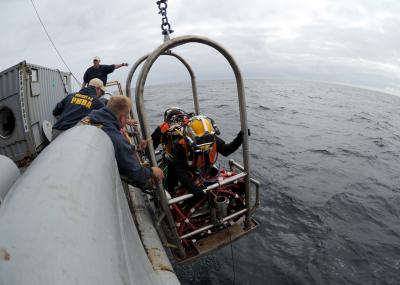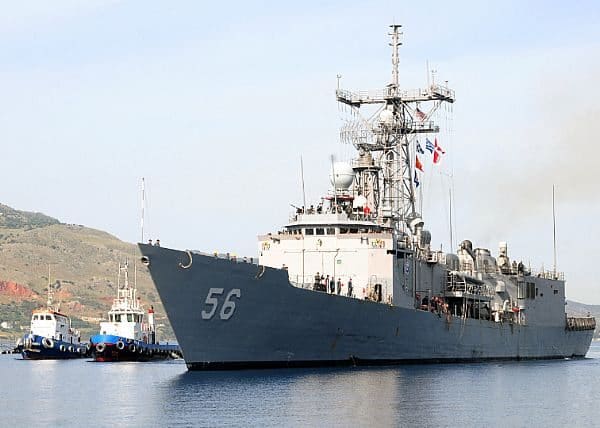U.S. Navy divers take on dangerous tasks every day-and starting this week, they will be part of a multinational effort near Estonia to help clear the Baltic Sea of underwater mines left over from as long ago as the First and Second World Wars.
“Open Spirit” will be among the biggest naval exercises in the Baltic Sea this year, where more than 150,000 naval mines were planted during the two world wars. It is all part of a day’s work for U.S. Navy divers, who in addition to hazardous missions face natural perils like oxygen toxicity and decompression sickness every day.
A video, released May 15, highlights how Office of Naval Research (ONR) scientists are working with medical experts to protect America’s undersea warriors. The video can be viewed at http://youtu.be/1TqYx5-HBEc.
The field is called Undersea Medicine-and it is designated a National Naval Responsibility by the Chief of Naval Research. Viewers can get an inside look at this world of the deep in “Protecting Navy Divers: The Undersea Medicine Solution” – a look at the groundbreaking work being done by the divers beneath the waves, and the scientists improving their ability to perform missions.
“There is no such thing as a pure 100 percent safe dive,” said Cmdr. Matthew Swiergosz, a program manager with ONR. “Navy divers take on jobs that are extraordinarily dangerous, and they do them with a poise and professionalism that would inspire every American who could see it.”
Continued domination of the undersea domain, officials say, is a vital component of national security.
“The Earth is mostly water,” said Swiergosz. “Most people live within a handful of miles of our oceans, seas, rivers. So any military force that’s supposed to provide national security must have underwater capabilities.”
The new video offers viewers unique insights into the hazards that await divers and the progress made to lessen the dangers.
Around the globe, ONR scientists continue the fight, with historic advances against natural perils in the deep. In addition to ongoing diving operations like Open Spirit with allied nations, a new joint research effort specifically in diving medicine was just announced between the U.S. Navy and the Vietnam People’s navy.
“What has been great about ONR is the ability to have the vision to see years into the future,” said Dr. Michael Qin, an ONR-supported research scientist who is featured in the video.
A Navy diver puts it even more succinctly.
“Without undersea medicine, we would still be in the stone age when it comes to underwater operations,” said Chief Warrant Officer 3 and diver John Theriot.
The Department of the Navy’s Office of Naval Research (ONR) provides the science and technology necessary to maintain the Navy and Marine Corps’ technological advantage. Through its affiliates, ONR is a leader in science and technology with engagement in 50 states, 70 countries, 1,035 institutions of higher learning and 914 industry partners. ONR employs approximately 1,400 people, comprising uniformed, civilian and contract personnel, with additional employees at the Naval Research Lab in Washington, D.C.











